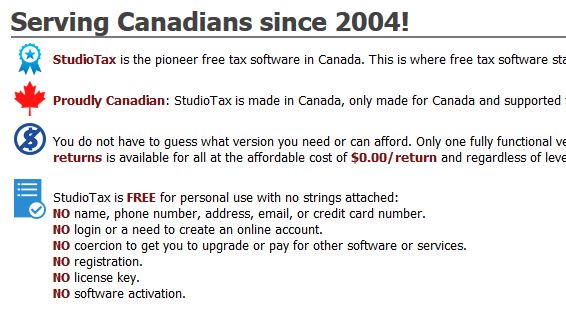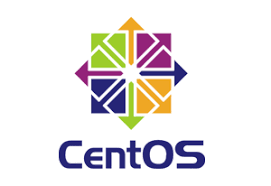It is tax season again.
Now I would like to introduce another one. One of the most famous Tax Software.
Premium + State Taxcut Software by H&R Block
They offer a range of products, all of which are supported by H&R Block tax professionals:
* With our software and online tax solutions, access to a real, live tax pro is available — so you will never get stuck. Guaranteed. Help is just an email or phone call away!
* Those who e-file their federal returns receive audit representation from an IRS-Licensed Enrolled Agent should it be necessary.
The premium version is $19.95. But you still can find the online version to meet your tax filing needs.
Check their TaxCut Online Product Comparison Chart. The Basic + E-file is only $14.95.
So, give them a chance an save you money to file your 2007 Tax retun.
At the last, I post the Overlooked Tax Benefits.
The IRS urges taxpayers to be sure they don’t overlook several important benefits to which they may be entitled.
Following are deductions or credits that taxpayers frequently overlook.
Earned Income Credit (EIC)
Earned income of less than $39,000 in 2007 may qualify a taxpayer to claim the EIC. This credit could be worth up to $4,536. When the EIC exceeds the amount of taxes owed, it results in a tax refund to those who claim and qualify for the credit. To qualify, taxpayers must meet certain requirements and file a tax return, even if they didn’t earn enough money to be obligated to file a tax return.
Child Tax Credit
The maximum amount you can claim for the credit is $1,000 for each qualifying child. Not only can you claim your child as a dependent, you may also qualify for both the Child Tax Credit and the Child Care Credit. The Child Tax Credit is worth $1,000 for each child you claim as a dependent who is younger than 17 at the end of the year.
Saver’s Credit
You may be able to take a credit of up to $1,000 (up to $2,000 if Married Filing Jointly) if you make eligible contributions to a qualified IRA, 401(k) and other retirement plans. The amount of the credit is determined by your filing status, your income and your other retirement contributions. The Saver’s Credit applies to the following people:
* Individuals with incomes up to $26,000
* Couples who file Married Filing Jointly with incomes up to $52,000
* Head of Household with incomes up to $39,000
* Persons who are at least age 18, not a full-time student and can’t be claimed as a dependent on another person’s return
Education Credits
You can receive credits for continuing your education at the post-secondary level. The Hope Credit allows a maximum deduction of $1,650. Among other criteria, to be eligible for the Hope Credit you must be enrolled in the first 2 years of post-secondary education – generally the freshman and sophomore years of college.
Unlike the Hope Credit, you may claim the Lifetime Learning Credit for qualifying courses at the undergraduate, graduate or professional level. Whether you attend an eligible institution on a full- or part-time basis, the credit is 20% of the first $10,000 (up to $2,000; $4,000 for Gulf Opportunity Zone students) you pay for eligible students in your family. You may use the credit on a yearly basis, and it can be applied even to prepaid expenses for the school year ahead.
Itemized Deductions
Your mortgage interest and real estate taxes may be your biggest deductions, but you can deduct these items as well:
* Medical expenses such as health insurance premiums, prescription eyeglasses and contacts, hearing aids, medical transportation, equipment for disabled people, and nursing home expenses
* State and local income taxes and personal property taxes
* Charitable contributions to charitable organizations, including household items donated to Goodwill
* Out-of-pocket job expenses that weren’t reimbursed by your employer, including car expenses (the non-commuting kind), travel expenses, uniforms, union dues and continuing education expenses
* Safe-deposit box fees, tax preparation fees, certain legal fees and other miscellaneous expenses
Adjustments to Gross Income
You may also claim these deductions whether you itemize or take the standard deduction:
* Student Loan Interest Deduction – up to $2,500
* Tuition and Fees Deduction – up to $4,000 of qualified higher education expenses
* Moving expenses – the cost of moving your family and belongings to a new job location
* Alimony paid
* Military reservists deduction – a deduction for non-reimbursable travel expenses for reservists who service more than 100 miles from home and stay overnight
Telephone Excise Tax Refund
Did you know you can still claim the telephone excise tax refund if you did not claim it on your 2006 return? If you qualify and did not claim this on your 2006 tax return, you can file an amended return. The IRS has set up a simplified amended return process to help. The phone tax credit was a one-time credit available on 2006 tax returns for people who had a phone in 2003, 2004, 2005 or 2006 and paid tax on long-distance or bundled service. The credit can be claimed for tax you paid for standard phone (landline), mobile phone, or VoIP (Internet) phone service. The standard deduction amount was $30 for a person filing a single return; $40 for married filers.
To claim this credit, file Form 1040X. Follow these steps to complete the form:
1. Fill in the top portion of the form through Line B.
2. On line 15, enter the amount being claimed in columns B and C and write “FTET” on the dotted line next to line 15.
3. Write “Federal Telephone Excise Tax” in Part II, Explanation of Changes.
4. Sign the Form 1040X (if Married Filing Jointly, both spouses need to sign) and mail it.
For more information on these overlooked deductions and credits, visit www.irs.gov.
For help preparing your tax return, use TaxCut
Software, or make Free e-file with TaxCut online from H&R Block
.




